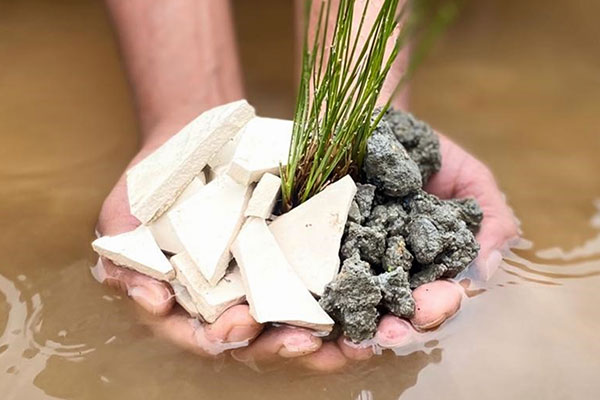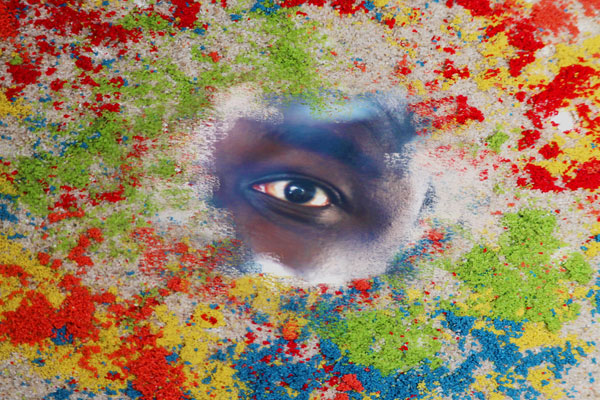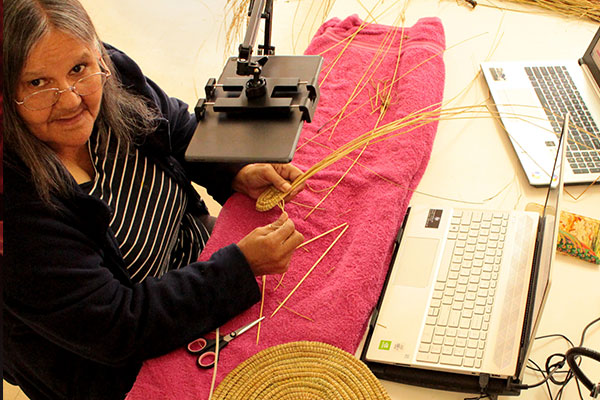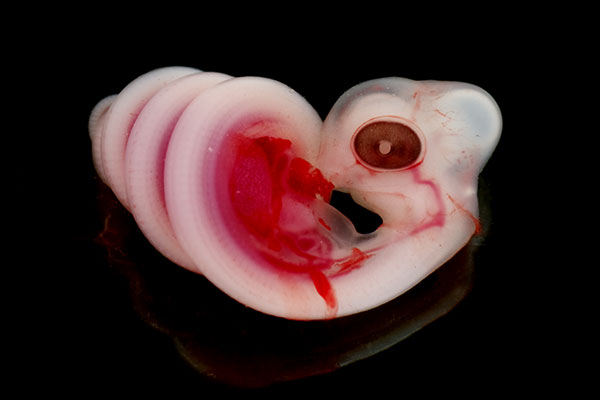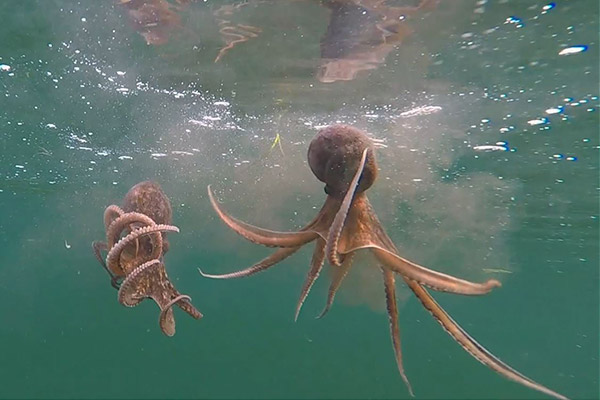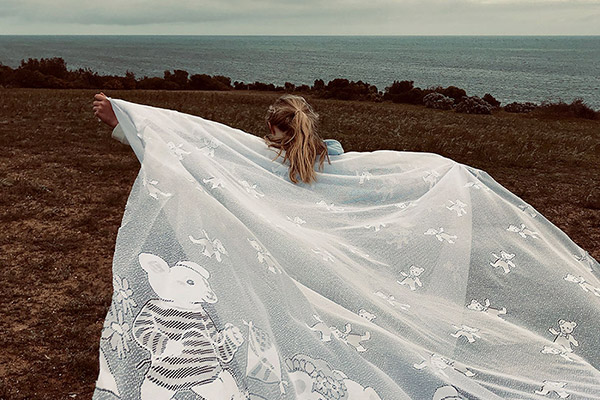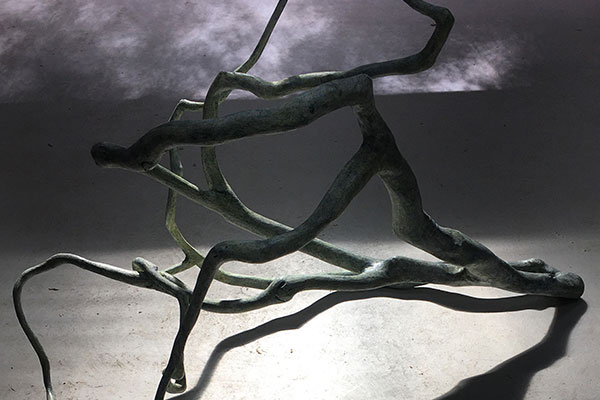IMAGES OF RESEARCH
The University of South Australia’s Images of Research competition celebrates our research, highlighting its breadth and diversity, as well as the people who make it happen.
Background: 2020 Images of Research, Zoe Doubleday, Future Industries Institute, UniSA STEM.
Title: Catch and release.
Images of Research 2020 winners and finalists
Congratulations to the Images of Research 2020 winners and finalists, their images tell a story of the research that happens at UniSA.
Click on the images below to find out more about the image.
Finalists
Floating an island of repurposed waste materials to nurture aquatic flora and fauna
Thanusshan Packiyarajah
UniSA STEM
-
Competition entry details and terms and conditions
Intent
The intent of this competition is to:
- Highlight the strength and creativity of our research both within and beyond UniSA;
- Recognise and reward the creativity of our research staff and students; and
- Provide a series of images communicating the value and beauty of UniSA research to our community, business partners, alumni and donors.
Criteria
We are seeking images that reflect our research and the people who make it happen – quality images that inspire. We welcome entries from all disciplines – the image should entice and captivate one’s attention, raising awareness and intrigue about the research.
In the case of videography, we are looking for short creative and visually impactful pieces.
Prizes
Recognising the efforts of entrants, all eligible entries will be in contention for first, second, third and the People’s Choice Prize:
1st Prize - $5,000 (For UniSA staff members the prize money will be transferred to a Professional Development (PD) fund to be used in accordance with UniSA’s Professional Development Fund Guidelines).
The People’s Choice Prize - $1,000
All four prize winners will receive a mounted picture of their entry and a certificate.
Specifications:
PHOTOGRAPHY
Any photographic image submitted must meet the following specifications: 300dpi at an approximate minimum size of 6000 pixels x 6000 pixels or 500mm x 500mm, saved as either a .jpg or .tif. File size 6MB or greater.
VIDEOGRAPHY
Any video submitted must meet the following specifications: no longer than 20secs, resolution 1920 pixels x 1080 pixels, sound 48000 Khz (if sound is used, however not a requirement) and saved as an H.264 (mp4) with a maximum file size 100MB.
Please note: videos talking to camera about research are deemed ineligible.
Application and selection process
Applications must be submitted online via unisa.edu.au by Wednesday 30 September 2020, 5.00pm ACST.
The judging panel will be comprised of senior university management, a university communications and marketing representative, and several external panel members. The winner will be announced online by the University of South Australia’s Chancellor and Deputy Vice Chancellor: Research and Enterprise via Social Media on 30 October 2020.
The People's Choice competition opens following the winner’s announcement, online voting runs for one month, closing 30 November 2020. The People Choice Winner will be announced online by the University of South Australia’s Deputy Vice Chancellor: Research and Enterprise 1st December 2020.
Eligibilty
To enter the Images of Research competition you must agree to the following:
- All the details on this application form are true and complete;
- I agree to the Terms and Conditions of the competition;
- This Image/Video was taken by me and is my original work;
- I have obtained the written consent of all persons who appear in this Image/Video (Consent Form available here);
- Use of the Image/Video by UniSA will not infringe the intellectual property rights of a third party;
- If the entry depicts Aboriginal knowledges, every effort has been made to ensure protection of Aboriginal Peoples rights to traditional knowledges.
Terms and Conditions
The “Images of Research” Competition (Promotion) is being run by the University of South Australia (ABN 37 191 313 308) (Promoter) of 55 North Terrace, Adelaide SA 5000.
Contact details: Tanya Vale, Tel: 8302 0157 Email: tanya.vale@unisa.edu.au
The total prize pool of this Promotion does not exceed $6,372. By entering the Promotion, you agree to, and represent that:
- you have read and understood these terms and conditions; and
- if you are under 18 years of age, your parent or guardian has read these terms and conditions and has provided their approval for you to participate in the Promotion and to provide the personal information contained in your entry
1. Eligibility
a. Entry is open to individuals who are:
(i) current students of the Promoter; and
(ii) employees of the Promoter.
Individuals who satisfy all of the above mentioned criteria will be Eligible Entrants. If an entrant is an employee and current student of the Promoter, the entrant will be considered an employee for the purposes of the Promotion.b. Entries open at 9.00am Adelaide time on [Friday 31 July 2020] and close at 5.00 pm Adelaide time on [Wednesday 30 September 2020], (Entry Period). Entries received after the Entry Period will not be accepted. Incomplete entries received during the Entry Period will not be accepted.
c. An entry will only be eligible for the Promotion where it complies with these terms and conditions in every respect (Eligible Entry). Each Eligible Entrant is restricted to one entry for the Promotion. If an Eligible Entrant submits more than one entry the most recently submitted entry will be considered to be the Eligible Entry for judging. All other previous entries entered by that Eligible Entrant will be considered ineligible.
d. The Promoter may exclude from eligibility any entry which it considers (in the Promoter’s sole and absolute discretion):
(i) does not or may not reflect positively on the Promoter;
(ii) may damage the reputation or goodwill associated with the Promoter, its branding and other intellectual property;
(iii) is not artistic in nature; or
(iv) is otherwise innapropriatee. No responsibility is taken by the Promoter for late, lost, incomplete, illegible or misdirected entries.
2. Method
a. To enter, Eligible Entrants must, within the Entry Period:
(i) enter an artistic research related:
- photograph (300dpi at an approximate minimum size of 6000 pixels x 6000 pixels or 500mm x 500mm, saved as either a .jpg or .tif. File size 6MB or greater); or
- video (no more than 20 seconds in duration, resolution 1920pixels x 1080pixels, sound 48000 Khz (if sound used, however not a requirement), and saved as an 264 (mp4) with a maximum file size 100MB); and
(ii) complete an online entry form and upload the photograph or video via the Promotion website: unisa.edu.au/imagesofresearch.
b. By submitting an Eligible Entry to the Promotion, the Eligible Entrant:
(i) agrees that if they are selected as a winner of the Promotion, their name may be used by the Promoter for promotional and publicity purposes for the benefit of the Promoter, including (without limitation) on the Promoter’s Facebook page at facebook.com/UniSA; Instagram account; Twitter account and other social media applications used by the Promoter;
(ii) grants to the Promoter an irrevocable, exclusive, worldwide, royalty free licence for the Promoter to use the photograph or video for its business purposes, including without limitation, to display the photograph or video on the Promoter’s social media channels, to use the photograph or video for educational, training, marketing, promotional and publicity purposes and to commercially exploit the photograph or video by its use in merchandise and/or services sold or supplied by the Promoter to third parties (whether or not those activities generate any revenue);
(iii) agrees that in relation to any moral rights (as defined by the Copyright Act 1968 (Cth)) that the Eligible Entrant holds in the photograph or video (Moral Rights), they irrevocably and voluntarily consent to any of the following acts or omissions on the part of the Promoter, namely:
a. using, reproducing, adapting or exploiting all or any part of the photograph or video, with or without attribution of authorship;
b. using the photograph or video in a different context to that originally envisaged;
c. altering the photograph or video by adding to, removing elements from, or rearranging elements of it;
d. making any modification, variation or amendment of any nature whatsoever to the photograph or video, whether or not it results in a material distortion, destruction or mutilation of it or is prejudicial to the Eligible Entrant’s honour or reputation, but not to the Promoter falsely attributing authorship of the photograph or video; and
(iv) agrees that they are not entitled to any fees or other compensation in return for any use of the photograph or video permitted by these terms and
c. the Eligible Entrant warrants that:
(i) the photograph or video submitted was devised and taken by the Eligible Entrant, is the Eligible Entrant’s original work and the Eligible Entrant owns all intellectual property rights in the photograph or video (including, without limitation, all copyright) or otherwise has the full authority to grant the licences under paragraphs 2B(i) and 2B(ii) and has the ability to provide consent under paragraph 2B(iii);
(ii) the Eligible Entrant has complied with all relevant laws in taking the photograph or video and entering this Promotion;
(iii) the Eligible Entrant has obtained the written consent (in a form acceptable to the Promotor) of all persons whose images appear in the Eligible Entrant’s photographs or videos for those photographs or videos to be used as contemplated under these terms and conditions and the Eligible Entrant will provide a copy of the written consent to the Promotor on the request of the Promotor;
(iv) use of the photograph or video as contemplated under these terms and conditions will not infringe the intellectual property rights of any third party (including, without limitation, any third party trademarks); and
(v) where the photograph or video depicts imagery of Aboriginal knowledges, artefacts, tools, or other expressions of Aboriginal peoples ways of knowing, the Eligible Entrant asserts that the entry depicting images and ways of knowing has not been misappropriated, manipulated or altered. For further information on UniSA’s commitment to Aboriginal and Torres Strait Islander research, please see our Aboriginal Research Strategy which was developed in partnership with Aboriginal communities.
3. Prize draws
(a) There are four prizes awarded in the Promotion, First, Second, Third and People’s Choice. The First Prize winner will receive $5,000, a mounted copy of their entry to the value of $93 and a certificate. The People’s Choice winner will receive $1000, a mounted copy of their entry to the value of $93 and a certificate. Second and Third prize winners will each receive a mounted copy of their entry to the value of $93 and a certificate.
The First Prize or People’s Choice winner who is an employee of the Promoter will have the funds transferred to their Professional Development Fund and the monies must be used in accordance with the Professional Development Fund Guidelines. The First Prize winner or People’s Choice Winner who is a student of the Promoter will have the funds transferred to their nominated bank account.
(b) The First Prize, Second Prize and Third Prize recipient will be determined by a panel that comprises the Deputy Vice Chancellor: Research and Enterprise (or nominated proxy) , the Director MoD (or nominated proxy), Executive Dean : UniSA Creative (or nominated proxy), PVC: Aboriginal Leadership and Strategy (or nominated proxy), Chief Marketing and Communications Officer (or nominated proxy) and at least two external representatives (Panel).
The external representatives will be chosen by the Promoter at its absolute discretion. This Panel will also determine the entrants that will be eligible for the People’s Choice prize.
The People’s Choice award will be determined via a polling system that will be available on the Promotion’s webpage.
If any misuse or improper use of the polling system is detected the Panel will have the absolute discretion to take any action deemed appropriate, including disqualifying Eligible Entries. Any action taken is final and not subject to review or complaint.
c. The Promotion is a game of skill. Chance plays no part whatsoever in determining the winners.
d. Judging of all Eligible Entries will be based on the adjudged uniqueness, quality and creativity of the photograph or video. The Panel’s decision is Judging of the first, second and third prizes and the contenders for the People’s Choice award will take place at, UniSA Cancer Research Institute Building, Corner North Terrace and Morphett St, Adelaide SA 5000.
Prizes awarded to employees of the Promoter will be transferred to their Professional Development Account and are not transferable, by the prize winners.
Prizes awarded to the Promoter’s students will be transferred to the individual’s nominated bank account.
4. Prize winners announcement and prize collection
a. The winners of the First, Second and Third Prizes will be notified by email (as determined by the Promoter) and announced on the Promotors social media on 30 October, 2020. The winner of the People’s Choice award will be notified via email and announced on the Promotors social media on 1 December, 2020.
b. The Promoter will transfer the First Prize and People’s Choice monetary component of the Prize to the winners shortly after they are notified.
c. The Prize Recipients for all four awards must collect their Prize at any time between 9:00am and 5:00pm on a weekday (that is not otherwise a public holiday in South Australia) from Level 4 Reception, 55 North Terrace, Adelaide SA 5000.between 1 November 2020-11 December 2020 (‘Collection Period’).
d. If the Prize Recipient does not collect their Prize during the Collection Period, then the Prize Recipient will be deemed to have forfeited any right to their Prize, and UniSA may dispose of or otherwise deal with the Prize as it sees fit.
5. Personal Information
a. Subject to paragraph 5C, the personal information of the Eligible Entrant, their legal guardian and representative will be handled in accordance with the Promoter’s privacy policy located at: https://i. unisa.edu.au/policies-and-procedures/privacy/privacy-policy/
b. By entering the Promotion, Eligible Entrants consent to the Promoter using their personal information to provide them with marketing, promotional and advertising information about the Promoter from time to time by email.
c. By entering the Promotion, entrants:
(i) are providing personal information to UniSA;
(ii) acknowledge and agree that personal information which is submitted on social media may be collected, used and distributed by any of the operators of that social media in accordance with the terms, policies and guidelines published on any of the websites of the relevant social media. Entrants should familiarise themselves with such terms, policies and guidelines of Facebook, Instagram or Twitter (as the case may be).
6. General
The Promotion is in no way sponsored, endorsed, administered by, or associated with any of Facebook, Instagram or Twitter, or any other social media Eligible Entrants:
(i) release Facebook, Instagram and Twitter from any liability arising from, or in connection with, the Promotion; and
(ii) must comply with any terms and conditions imposed by Facebook, Instagram or Twitter which may be applicable to the Eligible Entrant’s participation in the Promotion, including but not limited to the use of any intellectual property or branding.
Enquiries
If you have any questions please contact DVCRE@unisa.edu.au
Previous Years
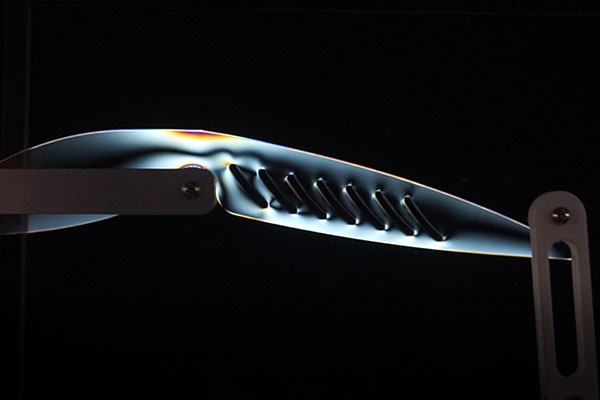
Stress testing
Andrew Whittaker
UniSA Creative
“This image depicts load testing laser-cut acrylic cantilevers using Polaroid lenses to highlight stress concentrations. This exercise formed part of a studio design and analysis practical.”
Coming from 20 years of consulting to industry, Andrew now teaches in the Bachelor of Design (Product Design) and the Master of Design (Industrial Design). His specialties are in design for manufacturing and industry collaboration.
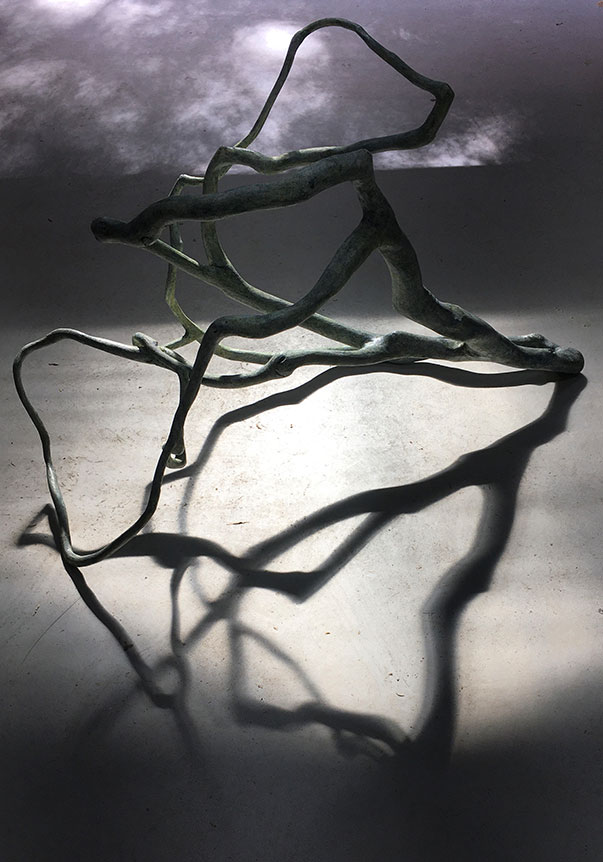
Mutant
Peter Walker
UniSA Creative
“This photo captures a moment of serendipity and imagination, essential elements in a creative process.”
“Naturally filtered sunlight creates a world of shadows and an evocative landscape, transmuting the wooden sculpture as it evolves. The image is a snapshot taken on the studio floor whilst working on the piece.”
Peter Walker is currently Program Director, Master of Design in UniSA Creative. Prior to this Peter was Associate Professor at the Rhode Island School of Design 2001-2011, serving as Graduate Program Director for the Department of Furniture Design and Department Head. His work is represented in public and private collections, including the Australian Parliament House Permanent Art Collection and the RISD Museum. Peter exhibits work regularly across Australia and USA, maintaining an active balance between studio practice and teaching.
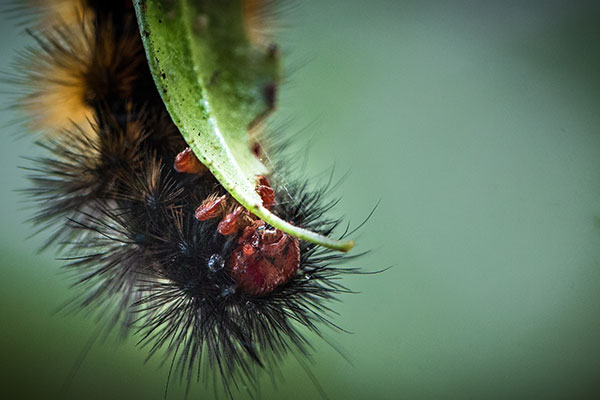
Heading to the brink
Carol Tilt
UniSA Business
“This photograph represents both the beauty and precarious nature of our planet.”
“The caterpillar is a pest, destroying the foliage that sustains it, but is also an important part of our ecosystem. This can be equated with corporations who are an integral part of our economy but often leave a trail of destruction in the wake of their pursuit of growth and profit. Without urgent restraints and accountability measures, we may be heading to the brink of our existence.”
Carol Tilt is a Professor of Accounting and Director of the Markets, Values and Inclusion research concentration in UniSA Business. She has over 25 years of experience – as a leader in her research area, her research focuses on social and environmental impacts of corporations and their role in the sustainability of our planet.
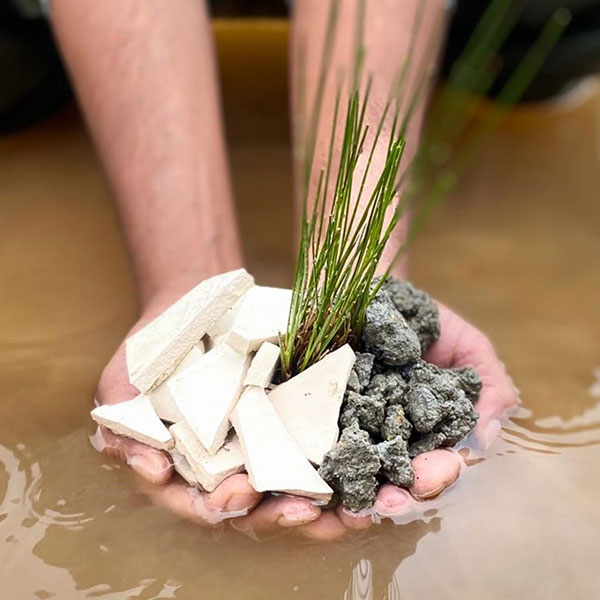
Floating an island of repurposed waste materials to nurture aquatic flora and fauna
Thanusshan Packiyarajah
UniSA STEM
“This image demonstrates the effectiveness of Construction and Demolition (C&D) waste which can be used as a filtre medium in Constructed Floating Wetlands (CFWs), allowing plants to remove pollutants from urban water sources.”
“This type of system will be able to act as a soil-less green infrastructure and nurture aquatic plant life by repurposing manufactured materials.”
Thanusshan is pursuing a Master by Research at UniSA. His research interest is drinking water, wastewater, and stormwater treatments. His current project is focused on utilising construction and demolition waste materials as a growing medium for floating wetland plants to remove pollutants from urban water sources.
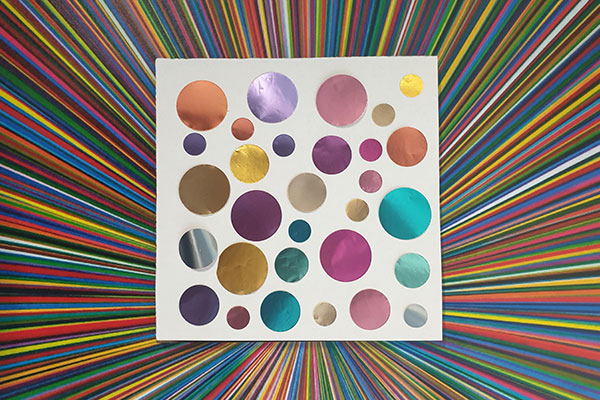
The colours of energy
Mohammed Mahmoud
Future Industries Institute, UniSA STEM
“This image presents a series of coloured disks displayed against a backdrop of coloured beams representing energy. These disks are being used in the manufacture of a new generation of lithium ion batteries and the surprising aspect is that they all contain the same element, namely, silicon.”
“What gives rise to their many and varied colours is the manner by which the silicon is deposited using a process called physical vapour deposition. Altering the nano-structure and density of the silicon not only produces beautiful colours, but more importantly it opens the door to a new generation of ultra-high capacity batteries for the energy needs of tomorrow’s technologies.”
Mohammad is a PhD student at UniSA working with fabricating silicon thin-films for many applications including anodes for lithium-ion batteries and optical uses.
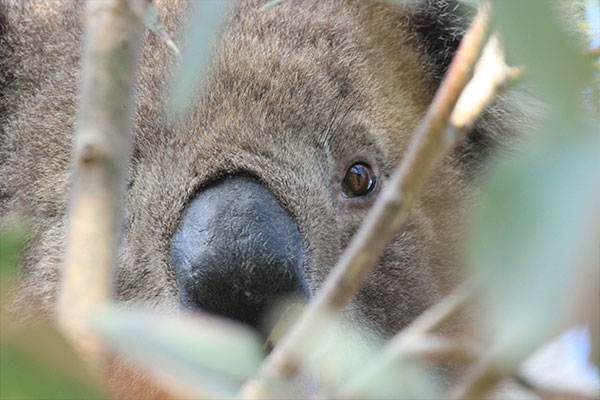
Koala in my patch
Cameron Lomas
UniSA STEM
“I was busily photographing eucalypt leaves when the tree I was studying suddenly moved. The koala had been holding a branch and eating from it when I spooked him and he let it go. He was about 1.5m above me in the tree and I snapped a few shots as I began to back away.”
Cameron is completing his Bachelor of Environmental Science at UniSA. His experience in the bush as a volunteer firefighter motivated him to begin studying environmental science and to participate in other volunteer activities towards protecting Australian ecosystems.
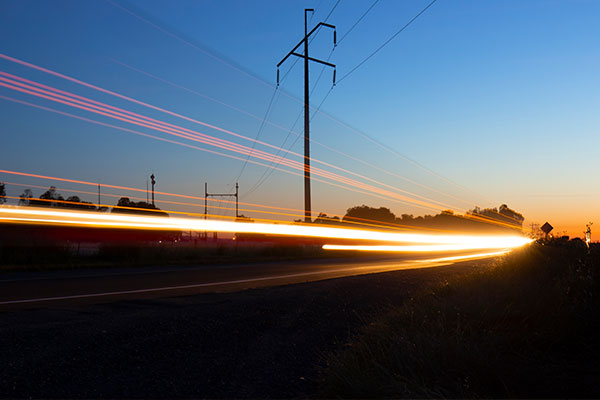
Every place matters
Sandy Horne
UniSA Business
“Research around place-based policies recognises the importance of each and every city, region and rural district. This image captures the connectivity that is so crucial to Australia’s regions and highlights the importance of communication, energy, highways and transport.”
“In contrast to spatially-blind policies which often leave many places behind, place-based policies can help every region reach its potential.”
“Place-based research along with regional studies show that regional Australia matters more today than it has at any other time since the 1940s.”
Sandy has been a researcher for more than eight years, with a wide range of experience providing support for projects covering topics such as regional studies, structural adjustment programs, housing, homelessness, public housing stock transfer and private rental support programs. She has worked on projects funded by the Australian Research Council, Australian Housing and Urban Research Institute, Wyatt Trust, and the Regional Australia Institute. Currently, as Project Officer: Research, Sandy has coordinated the ARC Linkage Project: Local Government and Housing in Australia since its inception in 2016 at the University of South Australia.
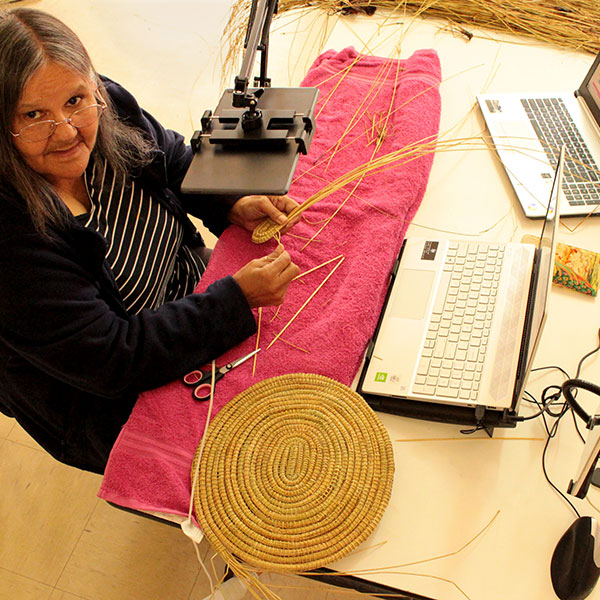
Knowledge continuity in the midst of a pandemic
Jelina Haines
UniSA STEM
“Who would have imagined that a pandemic would bring about a lot of change to our everyday life activities?”
“In the Indigenous context one of the changes, as well as a challenge, was the knowledge continuity of passing the skills of cultural weaving face-to-face. So, as a Storyteller and cultural weaver, adapting to digital technology was the only method to maintain the passing of knowledge to future learners.”
“This image tells a vital story – a tale of adaptation and the stability of traditional weaving against the anecdotal event of social distancing caused by the epidemic. The use of the tablet and laptops for live streaming, and the mobile phone as an internet hotspot, were instrumental in delivering digital weaving. Likewise, the image portrays the co-existence of traditional learning and the value of digital equipment for interactive learning while preserving the wisdom and practices of weaving.”
Jelina Haines is a current PhD student whose research focuses on the new phenomena coined as 'Indigenous Knowledge Journey' (IKJ) - practices observed during the cyclical process of how Indigenous Elder's knowledge is created, synthesized and translated, and the ethical dissemination of both cultural stories and communal activities within a social and cultural context. This research is grounded by community-based participatory research (CBPR) principles and the video ethnography paradigm. Jelina has been a previous Images of Research winner, taking out 1st prize in Images of Research 2017.
Catch and release
Zoë Doubleday
Future Industries Institute, UniSA STEM
“I filmed this video, practically blind, as I plunged my GoPro into the sea from a rocking boat whilst releasing 30 or so octopus back into the water as part of a UniSA research project - which as you can imagine was a handful or should I say armful.”
Dr Zoë Doubleday is an Australian Research Council Future Fellow and marine ecologist at the Future Industries Institute at UniSA. Zoe is on a mission to build ecological knowledge about the marine realm and develop solutions to address today’s environmental challenges. She is also an octopus biologist who loves working with these fascinating animals, that challenge our perceptions of intelligence and "higher" animals.
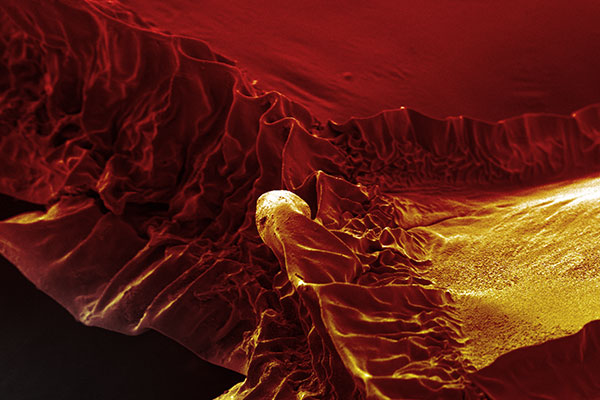
Leading edge of a dragonfly wing
Nasim Chitsaz
UniSA STEM
“It may look like the surface of another planet or an aerial image of some kind, but in fact, this is a Scanning Electron Microscope (SEM) captured image of the leading edge of a dragonfly wing, consisting of membrane and veins.”
“The purpose of this image is to identify the aerodynamic role of the smaller features of the dragonfly wing during flight. The structure of the dragonfly’s wing has a direct application for the development of highly maneuverable micro-air vehicles with flapping wings.”
Nasim is completing a PhD at UniSA focusing on the optimisation of a bio-inspired corrugated flapping wing.
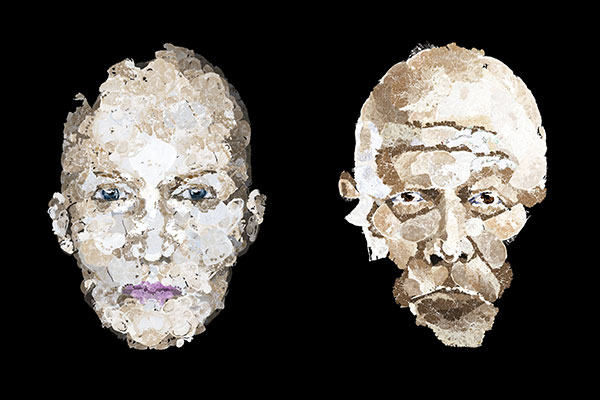
The faces of cancer
Robert Brooks
UniSA Clinical & Health Sciences
“The tissue samples displayed in this image were sourced from Discovery Life Sciences and the Australian Prostate Cancer BioResource. All tissue sections were cut, processed/stained and then imaged by the Mechanisms In Cell Biology and Diseases Research Group at UniSA, using a Zeiss Axio Scan Z.1.
Robert is a researcher within the Mechanisms in Cell Biology and Disease Research Group and has a specific interest in endosomelysosome cell biology in cancer, and is developing diagnostic, prognostic and imaging technology for biochemical medicine which will benefit patients.
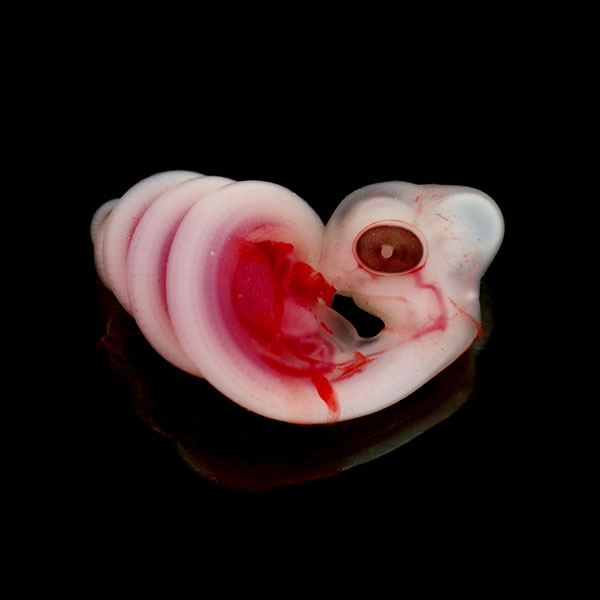
Exposed
Andrew Beck
UniSA Clinical & Health Sciences
“This is an image of a brown snake embryo Pseudonaja textilis - exposed for an evolutionary developmental study which compares embryonic tail bud somites across a range of species to investigate evolutionary changes in mechanisms controlling axis elongation.”
Andrew Beck is a Technical Assistant at UniSA Clinical & Health Sciences - with more than forty years of experience across a broad range of medical laboratory disciplines, providing technical support to practical classes and related areas of research. Andrews’s expertise, especially in histopathology, has led to many research connections covering areas as wide as snake evolution, venom, neuroscience, and cancer research.
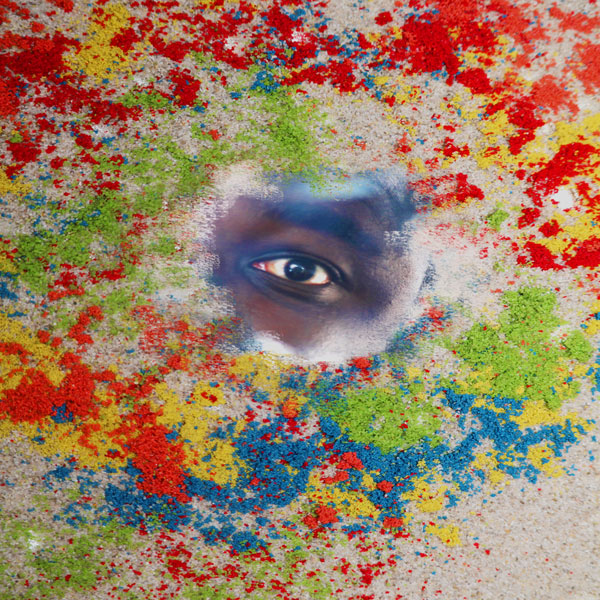
A stable eye on the many colours of sand
Isaac Ahenkorah
UniSA STEM
“This image is an artistic summary of my research, which involves using a sustainable bio-cementation approach for stabilising loose sand. The different colours of sand symbolise the diversity in the behaviour of sand, which can be monitored - demonstrated by an eye in the image - using a sustainable approach through advanced engineering research.”
Isaac is currently in the final year of his PhD in civil engineering at UniSA. His research involves using a sustainable bio-cementation approach to enhance the strength and stability of loose soils for civil and geotechnical engineering purposes. This technique is cost and energy efficient, renewable and bio-degradable, with many potential applications in civil and geotechnical engineering. Isaac won the 2nd prize in Images of Research 2019 for his image Stabilising Loose Sand for a Sustainable Future.
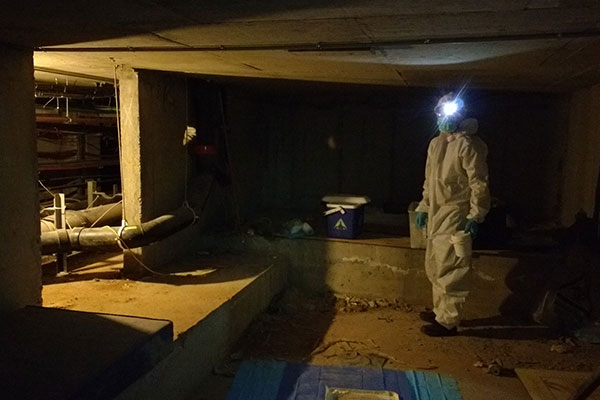
Deep down and dirty for science
Michael Short
Future Industries Institute, UniSA STEM
“This photo shows my colleague Dr Gianluca Brunetti in the bowels of the old Royal Adelaide Hospital during the early hours of the morning as we embarked on a 12-hour hospital sewage sampling campaign.”
“We took wastewater samples from several sewers around the hospital every hour between 6:00am and 6:00 pm and analysed them for antibiotic resistance as part of our RTIS project Waste not the water: Using municipal wastewater for community-scale health assessment led by our Future Industries Institute colleague Dr Barbara Drigo.
Michael is a Senior Research Fellow at UniSA’s Future Industries Institute. He is a wastewater scientist and environmental microbiologist with more than 15 years’ experience in wastewater systems at all scales. His research interests include urban water systems, environmental microbiology and microbial ecology, sustainability and life cycle assessment, and the intersection of environmental science and policy.
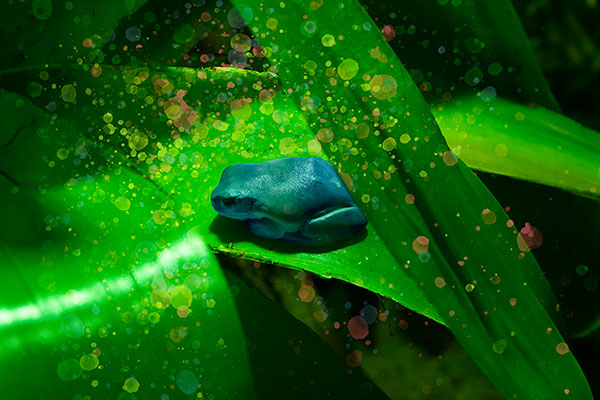
Ecological evolution
Stefany Bensimon
UniSA Creative
“As an architecture student, one of our main roles is to provide spaces that adapt to environmental circumstances. However, I felt a special curiosity to research the other side of the coin: is the ecosystem really adapting to us?”
“This photograph showcases the process of ecological evolution. Where the biological community gradually experiences change due to diverse factors; such as natural ecosystem evolution or through the disturbance caused by human activity. And one of the most common human activities is the building of shelters and settlements.”
“This means that architectural designers have the power to reduce habitat destruction and the impact of introduced species.”
“In my picture, the frog - as a part of the biological community - gradually changes from blue to green in an attempt to adapt to its environmental surroundings. The colourful particles show this constant change and how ecosystems in a cycle of resilience try to adapt to disturbance.”
Stefany Bensimon, who was born in Venezuela, is a Master of Architecture student whose goal is to promote environmental awareness through research and design settlements in a sustainable manner.
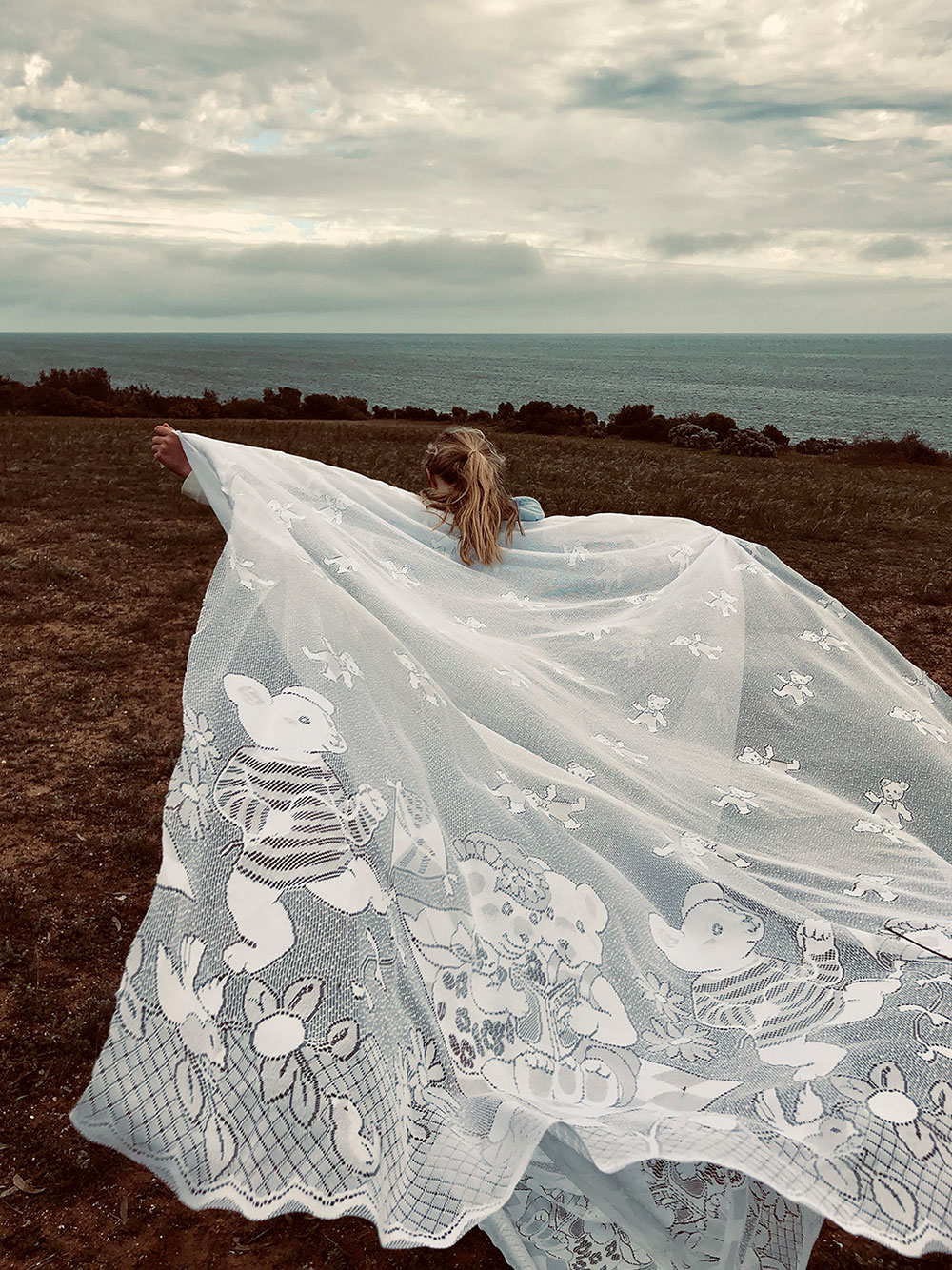
Ring a ring o' roses
Kelly Ryan
UniSA Justice & Society
“This photo is of a child in regional South Australia running towards the Spencer Gulf. Storm clouds roll in whilst the child is cloaked by jolly, carefree nursery rhyme characters.”
“The photograph depicts the current position of children living in regional South Australia in 2020. This year has been difficult and confusing for all, but particularly children living in regional and remote areas who would otherwise have access to child protection systems – including schools, sport and peers.”
“Children are particularly vulnerable to the fears and frustrations of adults, and because of the virus, services and support systems have not operated as they should. The events of this year have made already invisible, vulnerable children more so. Children who should be engrossed in the joys of childhood are far more at risk than they would otherwise be - leaving the jolly, carefree nursery rhyme characters in the past, whilst the storm rolls in.”
Kelly Ryan is completing a PhD in child protection law. She is examining the legal rights, risks and responsibilities of foster carers, and what work the law can do to improve outcomes for children living in out-of-home care. This is the third time that Kelly has featured as a finalist in Images of Research; in 2019 her image It Takes a Village featured her son.



